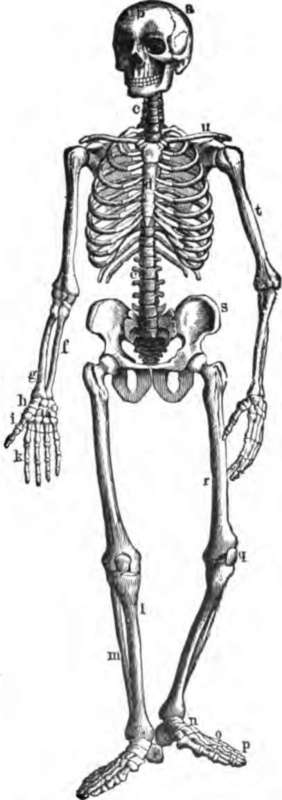Articulations And Joints
Description
This section is from the book "The Human Body: An Elementary Text-Book Of Anatomy, Physiology, And Hygiene", by H. Newell Martin. Also available from Amazon: The Human Body.
Articulations And Joints
If the pieces forming the hard framework of the body were put together like the beams and planks of a frame house, the whole mass would be rigid and immovable ; we could not raise a hand to the mouth, or put one foot before another. In order to attain mobility the bony skeleton is made up of more than two hundred separate pieces, joined together; the points where they meet are called articulations. An articulation at which a considerable range of movement is permitted is called a joint. The ends of bones which rub over one another in a joint are always covered by a very smooth layer of cartilage.
For what purposes ? What would be left if all materials composing the body except its connective tissue were dissolved away ?

Fig. 8. The bony and cartilaginous skeleton.
The bony skeleton (Fig. 8) consists of an axial skeleton, supporting head, neck, and trunk, and an appendicular skeleton, supporting the limbs and attaching them to the trunk.
Continue to:
